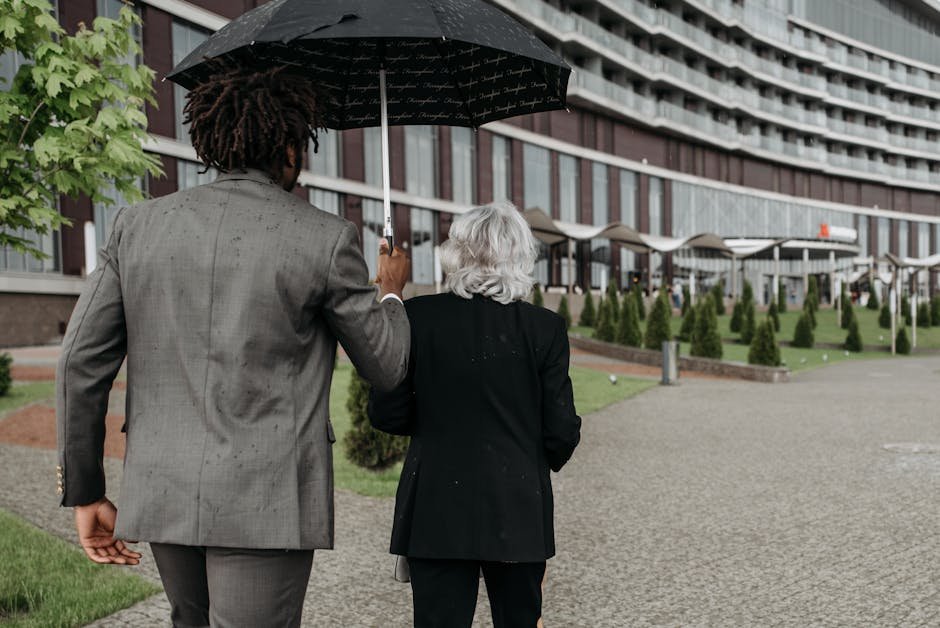Standing out in a crowded inbox is both an art and a science, especially for Sales Development Representatives (SDRs). If you’ve ever felt the frustration of sending LinkedIn messages into the ether, hoping for a spark of interest, you’re not alone!
But fear not—this guide is here to transform your outreach strategy. We’ll explore the secret ingredients to writing LinkedIn messages that not only get read but also inspire genuine responses.
So, let’s dive in and unlock the potential of your LinkedIn presence, one friendly message at a time!
Table of Contents
ToggleCrafting Engaging Intros that Hook Prospects
First impressions matter—especially in a digital landscape where attention spans are ephemeral. When crafting your initial outreach, it’s crucial to capture interest right from the start. Instead of opening with a sterile introduction or a sales pitch, focus on delivering immediate value. Think of your first sentence as a lightning strike that ignites curiosity. For instance, a compelling question or an intriguing fact about their industry can serve as a powerful hook.
Consider these strategies to create a captivating opening:
- Personalize it: Mention a recent achievement or a shared connection.
- Highlight common ground: Bring up mutual interests or similar experiences to build rapport.
- Offer insights: Dive into a helpful statistic or trend that resonates with their business challenges.
Examples of compelling openers could include:
| Approach | Example Sentence |
|---|---|
| Asking a question | “Have you ever wondered why most startups in your industry miss their growth targets by 30%?” |
| Highlighting a shared interest | “I noticed we both attended the Martech Conference last year—what did you think of the keynote on AI advancements?” |
| Offering a quick benefit | “Imagine reducing your customer acquisition cost by 20%—here’s how we’ve helped companies in your niche achieve that.” |
Remember, your goal is to make them pause and think, ”This person understands me and my challenges.” By demonstrating relevance and interest right away, you transform a cold message into a warm conversation starter.
Personalization Tactics to Make Your Message Stand Out
To truly capture the attention of your prospects on LinkedIn, it’s all about personalization. Going beyond just mentioning their first name can significantly enhance the likelihood of getting a response. Here are some tactical approaches to make your message unmissable:
- Research Your Prospect: Take a deep dive into their recent activities and accomplishments. Reference a post they’ve shared or an article they’ve written to show that you’ve done your homework.
- Tailor Your Value Proposition: Clearly articulate how you can address a specific challenge or goal they’ve mentioned. Personalized value propositions resonate more than generic pitches.
- Use Mutual Connections: If you share connections, drop a name. This not only builds credibility but also acts as a warm introduction.
| Element | Personalization Tip |
|---|---|
| Subject Line | Include their name or a recent achievement |
| Introduction | Mention something from their profile or content |
| Main Message | Relate your solution directly to their needs |
| Closing | Suggest a specific time for a follow-up chat |
Enhanced engagement also comes from incorporating multimedia elements. Crafting a short, personalized video or attaching a relevant infographic can capture attention and make your communication more interactive. The goal is to blend authenticity with creativity, making the reader feel seen and valued.
Value-Driven Content: Demonstrate Empathy and Offer Benefits
When crafting your SDR LinkedIn messages, embedding empathy and clearly outlining the benefits can make all the difference. Start by showing that you genuinely understand your recipient’s challenges. Acknowledge their potential pain points and illustrate how your solution can ease their burdens. Empathetic messaging shows that you’re not just another person trying to make a sale; you’re someone who truly cares about their business concerns.
For instance:
- Empathetic Opener: “I’ve noticed that many professionals in [recipient’s industry] are struggling with [specific issue]. It must be challenging to balance everything.”
- Benefit-Focused Follow-Up: “What if there was a way to [solution detail] and save you [time/money/resources]?”
By combining empathy with a clear presentation of tangible benefits, you create a rapport that is harder to ignore. Remember to also provide social proof or success stories wherever possible:
| Context | Solution | Results |
|---|---|---|
| Company A faced a [pain point] | We implemented [your solution] | Reduced [metric] by [percentage] |
| Client B struggled with [challenge] | Our team introduced [your product/service] | Improved [metric] by [percentage] |
Leveraging LinkedIn Features to Enhance Message Visibility
Utilizing LinkedIn’s vast array of features can significantly elevate the visibility of your messages, ensuring they stand out amidst the multitude of daily notifications your prospects receive. Start by making the most of LinkedIn’s InMail. This premium feature allows you to send messages directly to any LinkedIn user, even if you’re not connected, increasing the likelihood of grabbing their attention. Use engaging subject lines and personalize each InMail to resonate with the recipient’s interests or professional needs.
Another powerful feature is LinkedIn’s Voice Messaging. This allows for a more personal touch, enabling you to convey tone and enthusiasm that text alone might not capture. A quick, friendly voice message can make a memorable impact, especially in a sea of text-based communications. Additionally, integrating multimedia elements such as images, videos, or links to relevant content can make your message more engaging and informative.
Here’s a quick guide to leverage LinkedIn features effectively:
- InMail: Stand out with personalized and direct messages.
- Voice Messaging: Create a personal connection with a friendly tone.
- Multimedia Integration: Use images, videos, and links to add value.
Employ these strategies to enhance your LinkedIn message’s visibility:
| Feature | Benefit |
|---|---|
| InMail | Direct access to prospects |
| Voice Messaging | Personal and memorable |
| Multimedia | Engaging and informative |
By strategically leveraging these LinkedIn features, you can significantly enhance the visibility and impact of your SDR messages, fostering meaningful connections and driving better response rates.
Timing and Frequency: When to Reach Out and Follow Up
Timing is everything when it comes to crafting LinkedIn messages that get responses. When you reach out to potential leads, consider their daily routines and time zones. Most professionals check their LinkedIn messages in the morning or late afternoon, which are prime times to send your initial message and follow-up. The timing creates a window where your message is more likely to get noticed rather than getting buried under the barrage of other notifications.
It’s not just about the initial message; the follow-up is equally crucial. A good rule of thumb is to wait around 3-5 days before sending a follow-up. Don’t make the follow-up message a carbon copy of the first one. Highlight how you can offer value with a new perspective or additional information. Keep it brief, respectful, and always have a call to action, like asking for a brief call or meeting.
- First Message: Send between 9 AM and 11 AM on weekdays.
- Follow-Up: Wait for 3-5 days, best sent between 3 PM and 5 PM.
| Timing Tips | |
|---|---|
| Optimal Days | Tuesday, Wednesday, Thursday |
| Bad Timing | Weekends, Mondays, Holidays |
| Response Rate Booster | Add a personalized touch |
Creating a Call to Action That Encourages Replies
Crafting a CTA that resonates with your audience and elicits a response requires a blend of psychology and keen understanding of your recipient’s needs. A powerful call to action (CTA) can transform a simple message into an engaging conversation starter. Here’s how to make your LinkedIn CTAs irresistible:
1. Be Specific and Relevant
Tailor your CTA to your recipient’s context. Avoid generic phrases. Instead, incorporate details that show you’ve done your homework. For instance, don’t just say “Let’s connect.” Instead, try “Could we discuss how your recent success with [specific project] could align with the innovative solutions we offer?”
2. Use Actionable Language
Verbs are your best friends when crafting an engaging CTA. Use strong, clear verbs to encourage immediate action. Phrases like “Join our webinar,” “Explore our new case study,” or “Start your free trial” are more compelling than vague suggestions. Make it easy for the reader to know exactly what you want them to do and what’s in it for them.
3. Create a Sense of Urgency
Urgency can spur decision-making. Phrases such as “Get your free consultation this week” or “Limited seats available for our webinar” can encourage quicker responses. Just be careful not to overdo it—false urgency can erode trust.
Example CTAs for LinkedIn Messages
| DO | DON’T |
|---|---|
| “Can we schedule a 15-minute call to explore ways to boost your team’s productivity?” | “Let’s chat.” |
| “Interested in a free trial of our new software? Click here to start!” | “Check out our software.” |
| “Are you available for a quick call tomorrow to discuss how we can support your project?” | “Can we talk?” |
4. Personalize Your CTA
Adding a personal touch to your CTA can significantly increase response rates. Mentioning specific achievements or challenges faced by the recipient creates a connection and makes your message feel less like a sales pitch and more like a genuine offer of assistance.
By combining these strategies, you can craft CTAs that not only stand out but also boost your chances of getting the desired response.
Managing Your LinkedIn Inbox: Organization and Response Strategies
Effective management of your LinkedIn inbox is essential to staying on top of your correspondence and enhancing your relationship-building efforts. Start by sorting your messages using LinkedIn’s built-in filters. The filters can help you navigate through unread messages, InMail, and connection requests more efficiently.
Organizational Tips:
- Create tailored folders: Organize incoming messages into custom folders based on categories such as leads, partnerships, or job opportunities. This will help you access important conversations quickly.
- Mark important messages: Use LinkedIn’s ‘Star’ feature to prioritize messages needing immediate attention, or to flag follow-ups.
- Schedule time blocks: Dedicate specific timeframes in your calendar to review and respond to LinkedIn messages. Consistency is key to maintaining a clean and manageable inbox.
Having a response strategy in place not only keeps you organized but also increases your likelihood of getting positive responses. Crafting a thoughtful reply involves addressing the sender’s core message while injecting your unique value proposition. Personalization is always appreciated—reference shared interests, recent achievements, or specific queries to establish a genuine connection.
| Response Strategy | Benefit |
|---|---|
| Personalized Replies | Builds Trust and Rapport |
| Prompt Responses | Shows Professionalism |
| Clear Call-to-Action | Encourages Engagement |
Remember, the goal is to make your LinkedIn inbox a productive space that fosters meaningful connections and opportunities. By organizing your messages effectively and implementing strategic, personalized responses, you’re setting yourself up for success on this dynamic professional platform.
Frequently Asked Questions
What should I include in my LinkedIn message as an SDR?
Your LinkedIn message should include a personalized greeting, a brief introduction of who you are, a clear value proposition, and a call to action. Personalization can be based on mutual connections, shared interests, or specific insights about the recipient’s business.
How long should my LinkedIn message be?
Keep your LinkedIn message concise—aim for around 100-200 words. This length allows you to communicate your key points without overwhelming the reader, making it easier for them to engage and respond.
Should I customize each message I send on LinkedIn?
Yes, customizing each message is crucial for improving response rates. Tailoring your message to address the recipient’s specific pain points or interests shows that you’ve done your research and increases the likelihood of a positive response.
What tone should I use in my LinkedIn messages?
Use a friendly yet professional tone. Aim for a conversational style that reflects your personality while remaining respectful and clear. This approach makes your message feel more relatable and engaging.
How can I increase my chances of getting a response?
To increase your chances of getting a response, ask open-ended questions, provide value, and include a compelling reason for them to connect with you. Following up on your initial message can also help remind the recipient and prompt a reply.
Final Thoughts
As we wrap up this journey into the art of crafting irresistible SDR LinkedIn messages, remember that every word you type is an opportunity to connect. By weaving together authenticity, personalization, and a clear value proposition, you can transform a simple message into a conversation starter that beckons responses.
So, the next time you sit down to send that outreach message, think of it as not just a task, but a bridge to meaningful connections. Keep experimenting, stay curious, and don’t be afraid to let your unique personality shine through your words.
After all, behind every LinkedIn profile is a person eager to engage. Happy messaging, and may your inbox overflow with responses! 🌟







